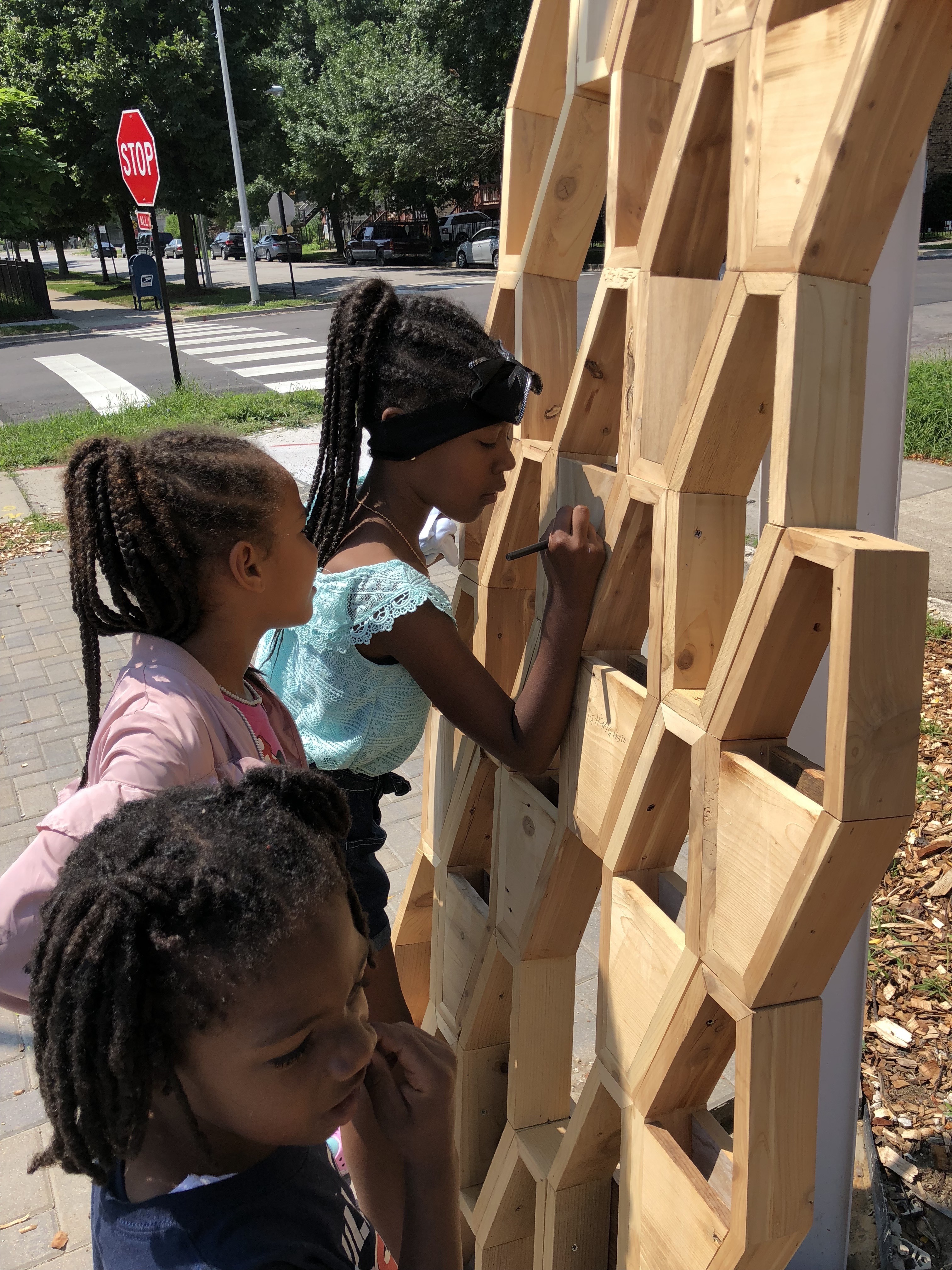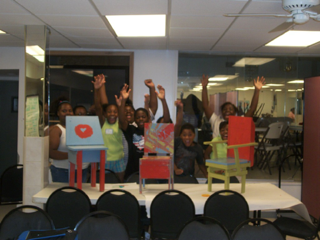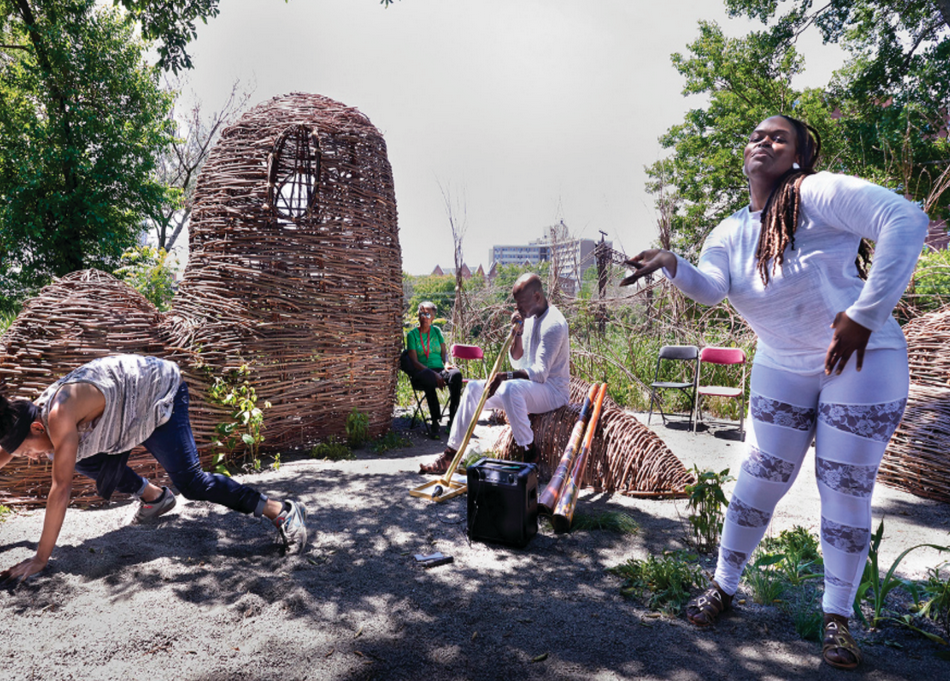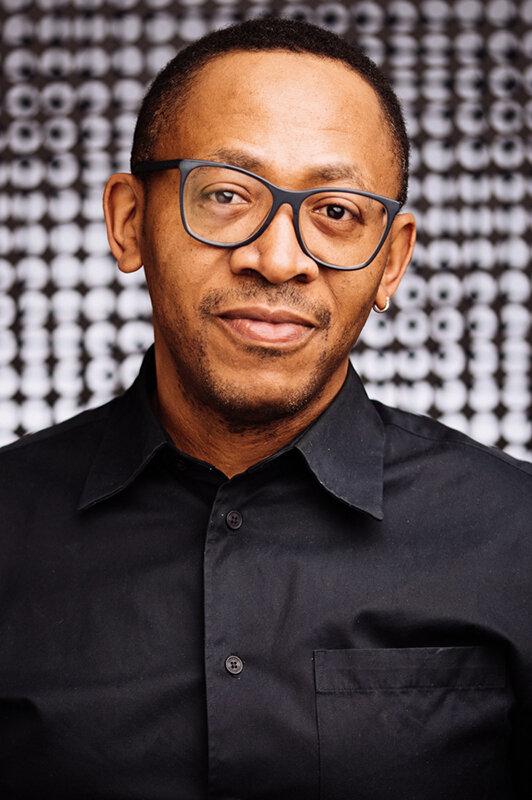Interview with Designer, Educator, and TFS Board Member Norman Teague
The Furniture Society talked with Norman Teague about his passion for design and why educating and empowering the community is so important.
Interview by TFS member Mya Rae Nelson
Norman Teague is a Chicago based designer, educator, and co-founder of blkHaUS studios, a socially-focused design studio dedicated to using design as an agent of change to uplift and transform marginal communities. Here, he talks about working within community projects and how we all have an opportunity to inspire the next generation.
How did you first become connected with The Furniture Society? What made you want to be part of the Furniture Society board?
In the summer of 2019 a member of The Furniture Society, Fo Wilson, asked that I join them for a conference in Milwaukee. It was a fabulous.
Can you talk a little about your background. When/how were you exposed to design/making?
I was raised on the south side of Chicago, in Englewood… and drafting class was the one thing I knew I was good at it and enjoyed it. It wasn’t until later at Columbia College Chicago that I discovered the woodshop and working with hand tools and machinery. I had signed up for interior architecture classes and was asked to make models for one of our assigned projects. Once I was authorized to use all the tools I just never wanted to leave the shop.
You describe your focus on making/design to empower black/brown communities. At what point did you move towards making this a focus of your work?
When I was a student at Columbia College Chicago, I missed the narrative of the black faces and it felt like a real absence from a community standpoint. I felt as though there was already a black history lacking in the classes I had been taking and a big part of me felt as if this was an opportunity to add a positive page. So, later in my career, I started teaching architecture classes at Roberto Clemente High School and it was there where I witnessed youth that really and truly had no examples of architects, designers or design role models to serve as a professional peer to advise or tutor them along the way. I knew then and there, I wanted to be a part of that example. I once took students on a field trip to visit Jeanne Gang studio and we took the bus 8 blocks east and got off the Division street bus and the kids were shocked that the office was so close. Unfortunately, it’s just not on the youth radar, yet.

From pop-up sites to highlighting community designers, how can these projects empower communities/people?
We all have a role to play when it comes to inspiring a next generation of people. It doesn’t matter if you are the best at what form of work you do but that you are afforded the opportunities to perform them in your own community.
Can you give an example?
One summer, 14 years ago, I worked with a small group of students ages 9 – 14 in a church on the west side of Chicago. They had never met a designer and had no idea what a designer does for a living. So I worked with them for two weeks for 4 hours a day afterschool and by the time we finished they each had designed or been a part of the design process. I am not sure if any of them are now designers or teachers or makers but it felt good to experience and share the moment of my voice mixed with their voices. It was a super satisfying experience. More info at: 22b design.blogspot.com

For anyone who feels they are not part of the accepted design world, what would you say to that person?
I’d say, do what makes you happy and the rest will follow.
Your studio — with Fo Wilson — works on collaborative and community projects. Can you talk about that process? For a project, such as ‘sounding bronzeville’ for example – your commission for the Chicago Park District and the Field Museum to create a community gathering – do you go into it with the design and the community designers in mind?
blkHaUS Studios started with community in mind and yes, there were thoughts of collaborating with community members at the birth of this project. With a public community gathering space in mind at the forefront we diligently set out to create a space that considered the movement of people as they travelled through the Great Migration from the South to the North and how there was quite often a need for rest, gathering and refueling. The space, geographically was in the Wild Life Corridor on the western skirts of Lake Shore Drive and is mainly exactly that: wildlife. Designing with respect to that we thought to use a material that was born and could exist within the space and not hurt or harm the existing wildlife. Willow was our choice, so we met Dave Chapman, the Willow expert, and consulted him on techniques of building a structure(s) that would hold a body or bodies but could also carry a very morphed like shape. That work was labor intensive, so we requested volunteers and so many amazing people came out to assist with the weaving of it. Chris Buchakjan was a large part of making this happen.

How much of your making/design work is collaborative, versus on your own?
50/50
Is there a type of design or maker who particularly influenced you?
Chuck Harrison was a motivating influence towards Industrial design and Martin Puryear has always had mad influence on me from an artistic direction.
How has the pandemic affected your day-to-day activities?
Sitting in front of the computer has become a norm (no pun intended) for teaching class and meetings with clients. I try my best to stay in spaces like the garage and basement areas to limit the computer access and committing more time to reading books and working with my hands.
What are some ways you are finding now to work with your community, stay creative?
Working from a comfortable place I am simply planning for the day when we all expect a green light to carefully mix and mingle again.

Norman Teague is a Chicago based artist, designer and educator who focuses on the complexity of urbanism and the culture of communities. Specializing in custom furniture design and designed objects that deliver a personal touch or function to a specific user and unique aesthetic detail. Teague’s past projects have included consumer products, public sculpture, performances and designed spaces. Teague prides himself for working within communities that offer ethical returns and human centered exchanges. Teague is a lover of craft and industry and works with partners to highlight careers in design, craft and pedagogy within the south side to increase the populations of color to have access to the design industry, while creating viable outlets for making in all capacities.
Teague holds an MFA in Designed Objects from the School of the Art Institute of Chicago (SAIC) and a BA in Product Design from Columbia College Chicago. Aside from his normal making practice he and Fo Wilson partner in blkHaUS studios to work on collaborative projects like Sounding Bronzevile, Connect Hyde Park and South Shore and Back Alley Jazz In South Shore. He was awarded the Claire Rosen and Samuel Edes Foundation Prize for Emerging Artists in 2015, a 2019, 3Arts Prize winner and is presently a creative collaborator in association with the exhibition design team of Ralph Applebaum & Associates (NY) and Civic Projects for the Obama Presidential Center.